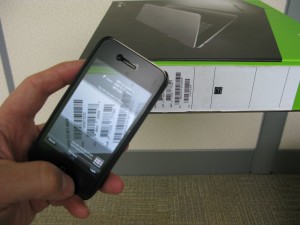December 19th, 2013 by Elma Jane
NTC’s BIG DATA
Improving Collection and Analytics tools to Create Value from Relevant Data.
Big data is a popular term used to describe the exponential growth and availability of data, both structured and unstructured. And big data may be as important to business…and society… as the Internet has become. Why? More data may lead to more accurate analyses. More accurate analyses may lead to more confident decision making, and better decisions can mean greater operational efficiencies, cost reductions and reduced risk.
With NTC Virtual Merchant product, it captures email addresses at the Point-of-Sale (POS) into a database to assist merchants and consumer stay connected, and for future Marketing.
In understanding Big Data For Merchants, NTC’s President Mark Fravel, provided a general overview of how online merchants can use Big Data. Large amounts of seemingly random data from many sources…can be used to create competitive advantages.
Necessity of Analytical Tools
Collecting Big Data is the easy part. Storing, organizing, and analyzing it is much more complex. One seam of data that several experts identify as a particularly rich, emerging source of information can be as diverse as CRM software, AdWords, and your own website. Mobile communications, including text messages and social media posts such as Facebook and Twitter. Making sense of it can be overwhelming without analytical tools. These tools facilitate the examination of large amounts of different types of data to reveal hidden patterns and correlations that are not otherwise easily discernible.
A good example is NTC, they could analyze data on visitor browsing patterns, login counts, phone calls, and responses to promotions…they can monitor to eliminate what isn’t working and focus on what does. Some of the off-the-shelf analytic solutions are so finely tuned, they can tell a vendor whether it needs to offer a 25 percent discount or if a 15 percent discount will suffice for a particular customer.
Association rule learning is another analytics method that is a good fit with Big Data. This could be, for example, a shopping cart analysis, in which a merchant can determine which products are frequently bought together and use this information for marketing purposes.
Uses of Big Data Analytics:
Big Data can be most useful in analyzing a customer’s shopping and purchasing experience, which can help a merchant in the following four ways.
Become more efficient by alerting you to merchandising efforts that are ineffective, and products that are not selling.
Encourage more purchases by presenting existing customers with complementary items to what they’ve purchased previously.
Enhance inventory management by eliminating slow-moving items and increasing the supply of fast-moving merchandise.
Example: A top marketing executive at a sizable U.S. retailer recently found herself perplexed by the sales reports she was getting. A major competitor was steadily gaining market share across a range of profitable segments. Despite a counterpunch that combined online promotions with merchandising improvements, her company kept losing ground….The competitor had made massive investments in its ability to collect, integrate, and analyze data from each store and every sales unit and had used this ability to run myriad real-world experiments. At the same time, it had linked this information to suppliers’ databases, making it possible to adjust prices in real time, to reorder hot-selling items automatically, and to shift items from store to store easily. By constantly testing, bundling, synthesizing, and making information instantly available across the organization…the rival company had become a different, far nimbler type of business.
Increase conversion rates by better identification of successful sales transactions.
Is Big Data Analysis Affordable?
NTC Data Storage is also a good alternative for small ecommerce merchants because it is relatively inexpensive and is scalable it can expand as data requirements grow.
Relying on data-driven decision-making is crucial in industries in which profit margins are slim. Amazon, which earns increasingly thin profit margins, is one of the most effective users of data analytics. As more Big Data solutions for small online businesses come to market and more online merchants incorporate Big Data into their business tool set, employing Big Data will become a necessity for all Merchants.
Using data wisely has the potential to boost margins and increase conversions for online merchants, and investors are banking on it.
This is Big Data for NTC we know WHO, WHAT,WHEN, AND WHERE a purchase took place.
Posted in Best Practices for Merchants, Credit card Processing, e-commerce & m-commerce, Electronic Payments, Internet Payment Gateway, Mobile Payments, Mobile Point of Sale, Point of Sale, Visa MasterCard American Express Tagged with: analyses, analytic, big data, communications, competitive, consumer, cost, database, decision, ecommerce, email, internet, marketing, Merchant's, mobile, monitor, ntc, online, orgainizing, patterns, point of sale, POS, profit margins, promotions, risk, scalable, solutions, storing, text messages, virtual merchant, website
October 18th, 2013 by Elma Jane
All Alerts, All The Time
Will mobile payment apps hail the arrival of mobile interruptions that never let up? Consumers worry that adopting a mobile wallet app will open them up to a barrage of alerts, sounding the alarm every time the local supermarket has toilet paper for half-off. The services can even track your purchases, opening the floodgates for targeted ads. Frequent alerts could be a deal breaker.
Battery Woes
As smartphones gets bigger, badder and more powerful, battery technology is struggling to keep up. That’s a problem if you want to make a call — but it could be an emergency if your smartphone is your wallet, too. Users are already scrambling to find a charging outlet by lunchtime. Soon, failure to recharge might mean you lack the funds to buy lunch in the first place. Meanwhile, credit cards never need a battery boost, and paper money has worked faithfully since well before the invention of the light bulb.
Do I Have The Right Phone?
You’re ready to make a mobile payment — but is your smartphone? Only the most popular new Android and Windows smartphones have NFC support to enable tap-to-pay services, and Apple has decided to forgo NFC altogether with its iPhone handsets. Users of budget smartphones are likewise out of luck. And though smartphones may seem ubiquitous, only a little more than half of U.S. adults have one.
Is It Secure?
Mobile payments open up a whole new frontier for fraudsters — or so cautious consumers worry. In fact, tap-to-pay technology is as secure as swiping a plastic bank card, and cloud services like PayPal Here support two-factor authentication for extra reassurance. Still, consumers worry their personal information could be intercepted during a transaction, and not everyone is convinced that Google can provide the same level of protection as their bank. But hope remains. The survey found about half of the most security-conscious respondents were much more likely to be interested in mobile payment options if they could be promised 100 percent fraud protection.
Limits, Limits, Limits
Even with a glut of mobile payment options, most lack at least one critical feature. Google’s Wallet app lets you stow your payment information in your phone to buy items in brick-and-mortar shops, but its touch-to-pay functionality is limited to Android devices on Sprint and other smaller carriers. Last year, Apple introduced Passbook, a mobile wallet app that lets users store gift card credits, loyalty card information and more on their iPhones — but only a handful of participating businesses support the app. The mobile payment model isn’t just fragmented — it’s fundamentally limited by countless companies competing for an ever-smaller piece of the pie.
Mobile What?
A recent CMB Consumer Pulse survey showed about half of smartphone users have never even heard of mobile payments. And of the 50 percent who have, a meager 8 percent said they’re familiar with the technology. Banks, credit card companies and others hoping to cash in on consumer interest will have to invest in better messaging first.
What Are The Perks?
Credit cards come with alluring perks — signing bonuses, cash back and travel accommodations, to name a few. But mobile payment systems have serious benefits. They can utilize GPS technology to direct you to deals, keep tabs on your bank account to alert you when you’re near your spending limit, and store unlimited receipts straight to the cloud. Businesses profit from mobile wallets, too, which often charge lower fees than credit card companies and encourage return trips by storing digital copies of loyalty cards.
What’s In It For Me?
To convince consumers to abandon trusted payment options for something new, companies must strike an undeniable value proposition. In the late ‘90s, electronic retail giants like Amazon compelled consumers to enter their 16-digit credit card numbers into online portals, opening up a whole new world of convenience with online shopping. But today’s consumers aren’t convinced that mobile wallets are any more convenient than their physical counterparts. Credit and debit cards already offer a speedy, reliable way to pay on the go. And since they’re accepted virtually everywhere, customers can fork over a card without worry or confusion. Convincing people that new technology is worth their time and effort might ultimately be the toughest nut to crack for mobile payment purveyors.
Where’s The Support?
Even the most enthusiastic adopters are out of luck if their favorite shops lack the infrastructure to process mobile payments. Big-box retailers sprang up in the infancy of computer technology, so joining the mobile payment revolution could necessitate updates to check out hardware and software. Mobile payments could be a boon to businesses, but installing the upgrades could be expensive and disruptive — especially when consumer interest remains low.
Which to Pick?
Even curious consumers are confounded by the array of mobile payment options available. Google, Visa, MasterCard and even mobile carriers like Sprint and Verizon are among the heavy hitters on the mobile payment scene, each offering a discrete service with different apps — and different rules. Some rely on Near Field Communication (NFC) technology that lets users simply tap their smartphone against a special reader to pay, while others offer up scannable QR codes. Mobile payments may never take off until one company rises above the rest with a single killer service.
Forget about cash or credit. In 2013, consumers can simply swipe or scan their smartphones at the checkout to pay. A huge array of mobile payment services have sprung up in recent years, urging customers to abandon their plastic credit cards for the “mobile wallet” revolution, but so far, adoption of mobile payment technology has been dismal.
Posted in e-commerce & m-commerce, Electronic Payments, Gift & Loyalty Card Processing, Internet Payment Gateway, Mobile Payments, Mobile Point of Sale, Near Field Communication, Smartphone Tagged with: alerts, Android, Apple, bank card, battery, cautious, consumers, crack, credit cards, deal, digital, fraud, gift card credits, google, GPS, information, Iphone, lower fees, loyalty cards, mobile, nfc, online, options, paper money, Passbook, payment, PayPal, personal, phone, plastic, portals, powerful, protection, purchases, secure, Smartphones, sprint, storing, support, Swiping, Tap to Pay, touch-to-pay, track, two-factor authentication, wallet, windows

